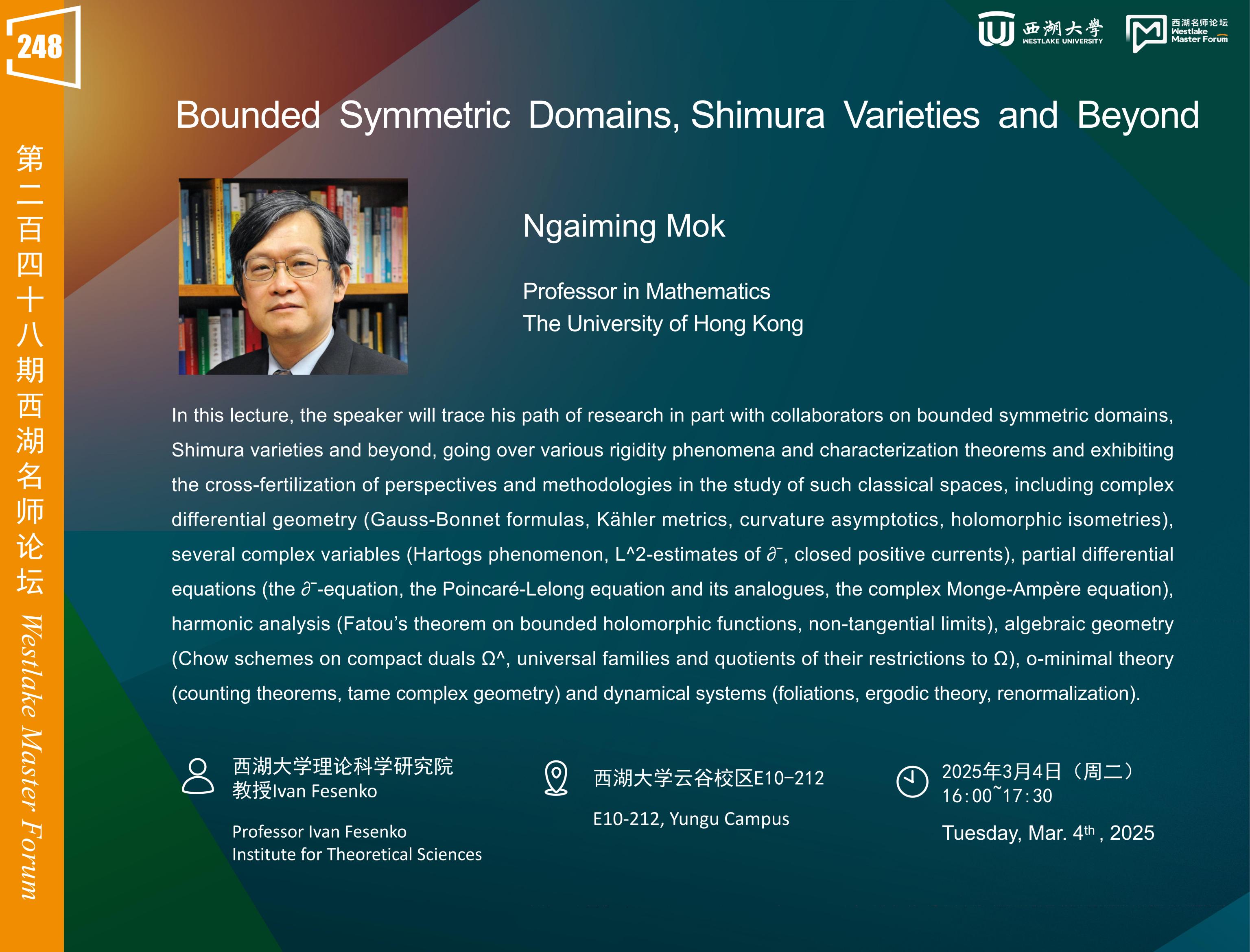Time:16:00-17:30, Tuesday, March 4 2025
Venue:E10-212
Host: Ivan Fesenko, ITS
Speaker: Ngaiming Mok, The University of Hong Kong
Title:Bounded Symmetric Domains, Shimura Varieties and Beyond
Abstract:Bounded symmetric domains Ω are bounded Euclidean realizations of Hermitian symmetric spaces of the semisimple and noncompact type. As such they are of immediate research interest from the perspectives of several complex variables and complex differential geometry. On the other hand, quotients of bounded symmetric domains by lattices of automorphisms correspond to moduli spaces for various classification problems. Especially, Shimura varieties, which are quotients of bounded symmetric domains by arithmetic lattices, have been of central interest in different research areas of number theory and algebraic geometry. From the perspective of complex geometry, quotient manifolds by torsion-free lattices have been studied as complex manifolds admitting geometric structures and Kähler metrics with special curvature properties, and as such the lattices need not be arithmetic.
In this lecture, the speaker will trace his path of research in part with collaborators on bounded symmetric domains, Shimura varieties and beyond, going over various rigidity phenomena and characterization theorems and exhibiting the cross-fertilization of perspectives and methodologies in the study of such classical spaces, including complex differential geometry (Gauss-Bonnet formulas, Kähler metrics, curvature asymptotics, holomorphic isometries), several complex variables (Hartogs phenomenon, L^2-estimates of ∂ˉ, closed positive currents), partial differential equations (the ∂ˉ-equation, the Poincaré-Lelong equation and its analogues, the complex Monge-Ampère equation), harmonic analysis (Fatou’s theorem on bounded holomorphic functions, non-tangential limits), algebraic geometry (Chow schemes on compact duals Ω^, universal families and quotients of their restrictions to Ω), o-minimal theory (counting theorems, tame complex geometry) and dynamical systems (foliations, ergodic theory, renormalization). If time permits we will explore the interface between bounded symmetric domains Ω and the theory of varieties of minimal rational tangents (VMRTs) modeled on their compact duals Ω^.
